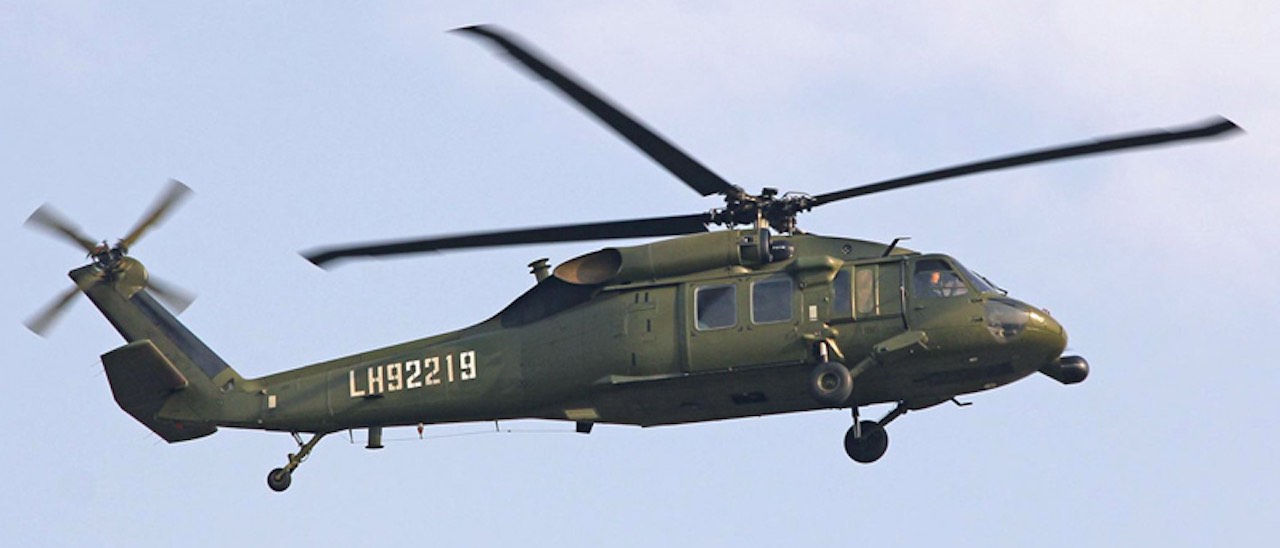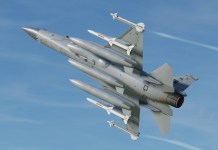China’s domestically developed Z-20 medium-lift utility helicopter has sparked a debate over its originality and effectiveness following an article in state media – Global Times. The piece rated it better than the US Sikorsky S-70, which it resembles.
A near look-alike of the US S-70 Black Hawk, many experts claim that the Chinese Z-20 is merely its reverse-engineered version.
In contrast, others believe it shares only basic design with its American iteration and nothing else. The Z-20 debuted in Beijing at the National Day military parade on October 1, 2019. It has already entered service with the People’s Liberation Army, Navy, Air Force, and the Chinese People’s Armed Police Force.
Open-source information indicates that Z-20 has improved engine, avionics, electronics, sensor configuration, and overall kinematic performance.
China Claims Z-20 Makes S-70 Eat Dust
The report in GT quoted Z-20’s chief designer Deng Jinghui’s interview with China Central Television (CCTV), where he was responding to a query comparing the Z-20 and the S-70.
“The Z-20 is a fourth-generation helicopter with many technologies the Black Hawk does not have, including a fly-by-wire (FBW) flight control system, which is a typical characteristic to make a helicopter ranking among the fourth generation,” Deng said.
Deng backed up his claim by pointing out that China developed the FBW since it had no such foreign system and that even the upgraded US Black Hawks with FBWs have not yet entered service.
Deng refers to the UH-60M, of which the US Army ordered 120 units only recently in August 2022. An FBW reduces the overall weight of the fuselage since it replaces the mechanical controls with electronic ones.
Chen Guang, vice general manager of AVICOPTER, the helicopter branch of the Aviation Industry Corporation of China (AVIC), had named other features possessed by the Z-20 that the S-70 lacks.
These include active noise and vibration control, an indigenous turboshaft engine that can support flight in high altitude, low oxygen environments, low noise rotor design, and aerodynamic rotor shapes that are considered advanced even in Western aviation industry circles.

Different & Superior Doesn’t Mean Original
Few recall that China officially used the Sikorsky S-70 sold by the United States in 1986, nearly a decade after a historic rapprochement between the two countries.
Amid the Sino-Soviet Split, where the Communist ‘comrades’ fell out over ideological lines, a détente was brought about under Presidents Richard Nixon and Chairman Mao Zedong.
It culminated in Nixon’s landmark visit to Beijing on July 15, 1971. This was before China opened up its economy under Mao’s successor Deng Xiaoping for foreign investment and underwent rapid industrialization and technological transformation.
Around 24 S-70C-2 – officially designated and designed for Chinese use – served with the People’s Liberation Army Air Force (PLAAF) in 1986. They were primarily used for resupplying troops in the inhospitable terrain of Tibet and Xinjiang.
They were then used extensively for Humanitarian Assistance and Disaster Relief (HADR) during the 2008 and 2013 earthquakes in Sichuan. They also worked alongside the aging Soviet-era Mi-8 helicopters China wanted to phase out.
Thus, the belief that the S-70s served as a readymade template for the development of the AVIC and the Harbin Aircraft Manufacturing Company (HAMC) isn’t entirely unjustified.
A ready airframe, basic design concepts, and component information significantly eased the development of a complicated aerospace product. This stands true even if one assumes that China may not have been successful in reverse engineering all the S-70’s features.
Development started in 2006, and the first Z-20 finally took to the skies on December 23, 2013. Reverse-engineered weapons platforms are naturally expected to be improvements over the originals.
Thus, the claim that the Z-20 is superior to the S-70 in many respects is within the realm of possibility, especially for China which has massively improved its defense industrial and technological base.
In the GT report, Deng subsequently claimed that “it is not (the Z-20) that has copied the Black Hawk; it is the Z-20 that has surpassed the Black Hawk.”
That he does not outrightly deny that the Z-20 is copied from the S-70 proves that the US helicopter did serve as a solid foundation for the Z-20. Moreover, China does have a history of lapping up foreign technology through unofficially state-approved espionage and technical reverse engineering programs, even from the thickest allies.

Z-20 Isn’t The First One
In 1999, Chinese agents were reported crisscrossing the Balkans, taking fallen debris of a US F-117A Nighthawk stealth attack aircraft that Serbia shot down. This was during the North Atlantic Treaty Organization (NATO) attack on Yugoslavia, the Serbian conflict, and the Kosovo War.
Adm Davor Domazet-Loso, Croatia’s military chief of staff said at the time that Chinese agents took parts of a downed F-117 stealth jet in 1999.
China reportedly used its clout with Pakistan to access the crashed stealth Black Hawk helicopter following the covert US raid that killed Osama Bin Laden at Abbottabad in May 2011. Information of the Chinese espionage had led to diplomatic backlash from the US, with Islamabad eventually relenting and disallowing the Chinese engineers.
China’s J-20 stealth fighter has been long criticized for having been developed using hacked F-35 technology. US investigators had uncovered evidence of sophisticated Chinese cyber attacks on many private US contractors involved in the project.
China’s illegal technological espionage is driven by practical difficulties for a developing country building niche aerospace technology ground up while catching up with an advanced challenger like the US.
Comments from Chinese social media say that spying is common among rivals and cyber hacking is “just another form of espionage.”
“Even the US wouldn’t give up the opportunity to study sophisticated Russian and Chinese jets or hypersonic missiles,” a Chinese netizen identifying himself as Li Zhao had commented in one such forum.
Even Russia isn’t spared, where China has reverse-engineered the Su-27 and the Su-33 into the J-11 and J-15 fighters. Russia even insisted on selling China complete Su-35 jets and not just the AL-41F turbofan engine, showing apprehensions about Beijing’s reverse engineering programs.
Z-20 Other Features
Although the Z-20 is similar to the Sikorsky S-70/UH-60 Black Hawk configuration, it’s more squared in the outline of the fuselage, especially in the rear of the passenger cabin.
The Z-20 uses two windshields instead of three, which improves the pilot’s field of vision compared with the original S-70C.
The Z-20 has a weather radar and a more compact infrared forward-looking turret under the nose compared to the Z-10 and Z-19, allowing pilots to fly at night and under low visibility.
It can also carry a newly developed lightweight howitzer similar to US M777 and can be armed with machine guns and other weapons.
The European-style five-blade rotor on the Z-20, compared to the four on the S-70 and UH-60, places less stress on each blade.
The rotors particularly have a de-icing technology that is key to their ability to fly in the high-altitude snowy terrain. Also, Z-20 is moving from using the powered Pratt and Whitney PT6-C76C turboshaft engines to using two WZ-10 turboshafts, producing around 2400 shaft horsepower each.
- The author can be reached at satamp@gmail.com
- Follow EurAsian Times on Google News




